How To Change The Background Of A Headshot In Photoshop
Do you want to change the groundwork of a photograph in Photoshop? Possibly you want to turn a cloudy sky into a beautiful sunny day? Or add a flat background to your corporate headshot? If and so, yous'll be pleased to know it'southward actually quite easy.
Being able to change the groundwork of a picture is i of Adobe Photoshop's best features. The application even includes tools to select catchy areas like hair, and match the colors from unlike images.
How to Change the Background of a Photo in Photoshop
The best approach to making a background change in Photoshop is to create a selection that separates the foreground and the background.
Every bit with everything in Photoshop, in that location are several different ways to do achieve the same results. In this tutorial, we'll exist using the Quick Selection tool, only it would piece of work just as effectively with the Pen tool.
Here's what we're going to create. We'll start with the photo on the left, and finish with the one on the correct.

We're using images from Pexels.com, one of the best royalty-gratis image sites. It's a nifty identify to notice content to practice with. You can download our primary epitome here.
Pace i: Select the Foreground Object
Grab the Quick Selection Tool from the toolbar, or striking W on your keyboard (1 of many useful keyboard shortcuts in Photoshop). With a hardish brush, click and drag within the area you want to select. Photoshop will attempt to guess which parts yous want to include based on the dissimilarity levels in the image.
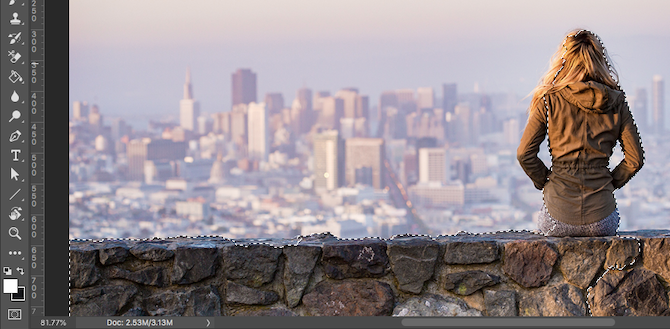
Every bit a outcome, y'all'll find that areas with high contrast and hard edges are selected cleanly, but low contrast and soft edges volition crave more work.
In some images, you might discover information technology easier to select the background instead. Yous can then capsize the selection by pressing Shift + Ctrl + I on Windows, or Shift + Cmd + I on Mac.
Step 2: Fine-Tune Your Choice
To fine-tune your selection, zoom into the prototype and make your brush size smaller by pressing the left square bracket. At present, proceed clicking and dragging to add parts of the foreground object to your pick.
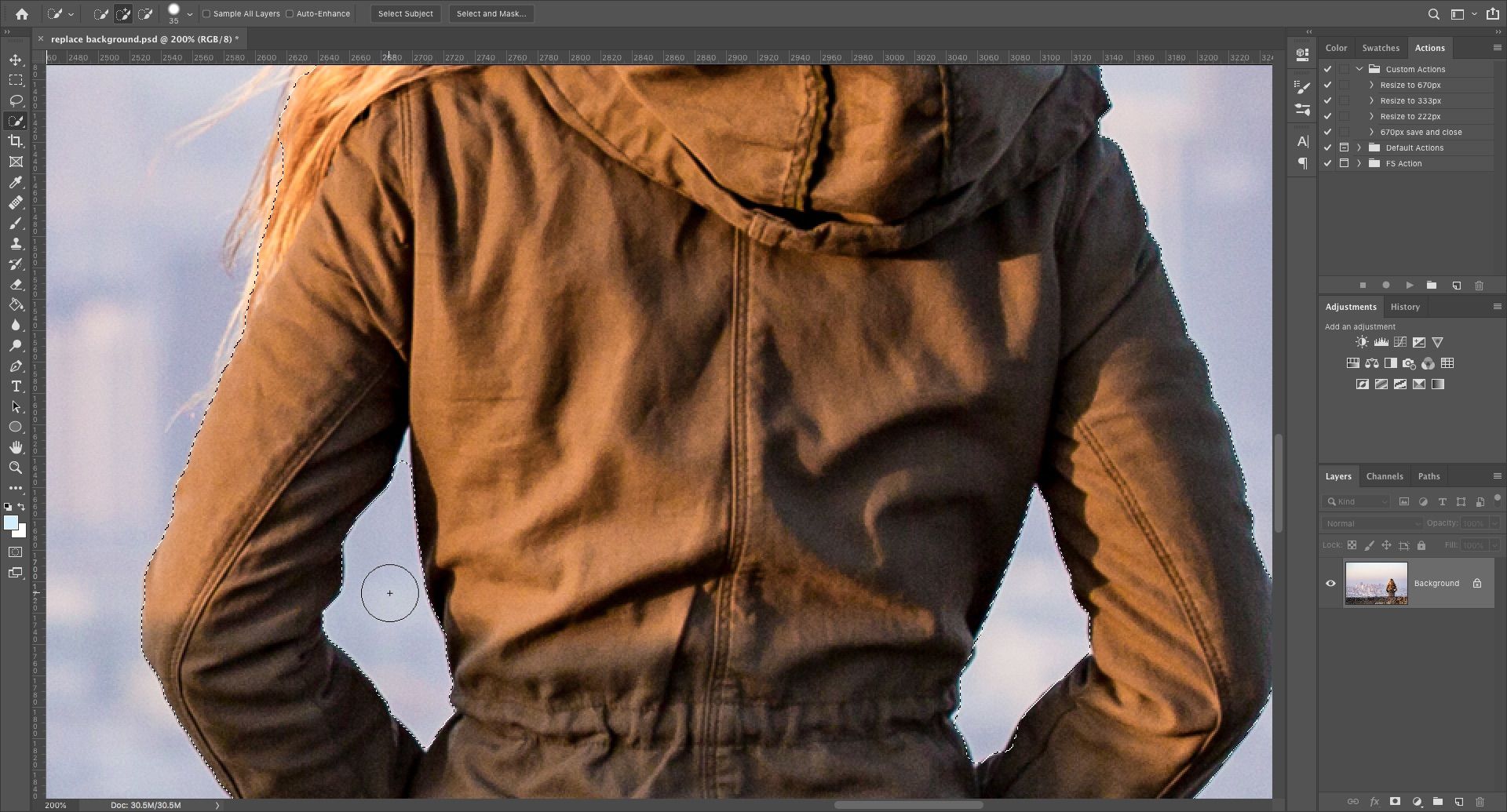
If you need to remove annihilation from the selection, hold down the Alt primal and click and drag in those areas.
Ideally, your option should incorporate all solid objects, but you lot don't need to obsess over selecting individual strands of hair, for instance. We'll sort that out in a moment.
Footstep three: Select and Mask
In the options bar at the acme of the screen, click Select and Mask. The screen that opens enables you to refine the selection and convert it into a mask.
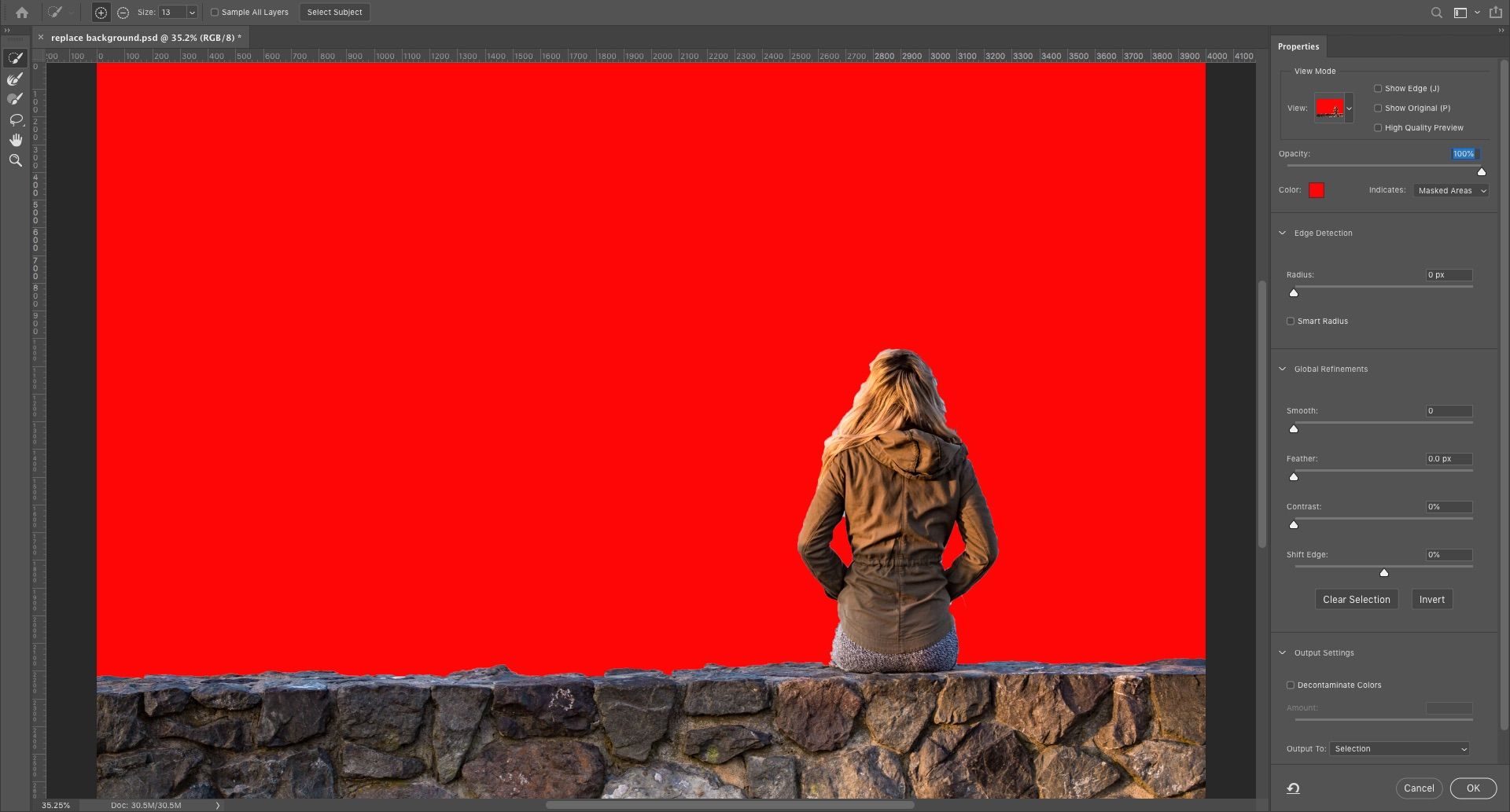
In the Properties panel, click the View Manner choice to change how you will see your selection. Overlay is a skillful option, as y'all tin can option a color that contrasts with your epitome. But as you work, you may want to striking the F key to bicycle through the views—unlike backgrounds will highlight any problems with your choice.
Stride 4: Refine the Choice
Now you lot can brainstorm refining the selection. In the toolbar on the left side of the screen are diverse tools to help yous with this:
- Quick Pick Tool. The same as we used in stride i, this can be used to speedily add (or remove) whatever larger areas to your selection.
- Refine Border Brush Tool. Best used over hair and other soft edges.
- Brush Tool. Use this over harder edges.
- Lasso/Polygonal Lasso Tool. Manually draw areas to add or remove from your selection.
Zoom in to your image to cheque the edges of the selection. Yous won't need to touch much of it—you're mostly looking for areas that either haven't been selected, have been wrongly selected, or have very rough edges.
In our image, we'll start with the Brush tool to smooth the edges of the wall and trunk. But paint in to add to the selection, or concord Alt and pigment to remove areas.

Adjacent, switch to the Refine Edge tool to touch upward the hair, or whatever soft edges. Under Edge Detection in the correct-paw console, check the box marked Smart Radius. This helps Photoshop make a distinction betwixt soft and hard edges.
As well, you can increment the Radius a trivial. Y'all'll need to do this by heart to run into its effects—printing P to toggle between before and after.

Place a softish Refine Edge castor on the outer edge of the pilus and begin brushing. You lot should encounter strands of hair starting to be added to the choice. Concur down the Alt key and paint to disengage your changes if you aren't happy with them.
Step 5: Adjust the Settings
The Select and Mask options include several listed nether Global Refinements. Nosotros don't demand to use them for our image, just for reference they are:
- Smooth. Smooths the edge of a option, removing whatever jagged lines. Expert for selections with a clear edge.
- Feather. Softens the edge of a option by adding a feather.
- Contrast. Hardens the edge of a selection by increasing contrast on the edge pixels.
- Shift Border. Moves your entire choice in or out by a specified number of pixels.
Step 6: Remove Color Fringing
One time y'all're happy with your choice, become to the Output Settings in the right-manus panel. Tick Decontaminate Colors to remove any colour fringe left in your choice.
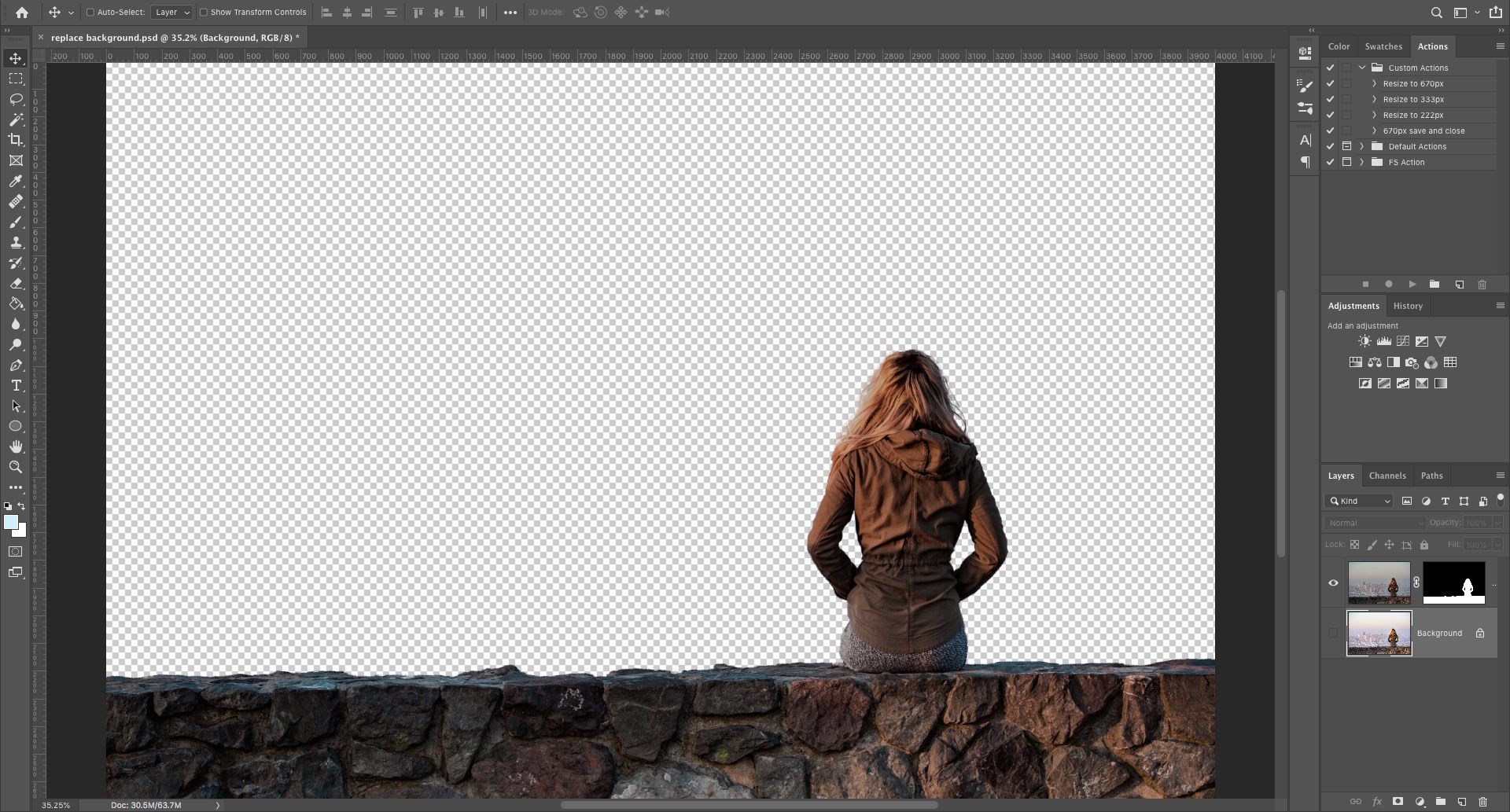
In Output, choose New Layer with Layer Mask, and click OK. Y'all will now return to your principal epitome, with your selection added as a new layer. Now that yous've removed the paradigm background, you lot're ready to add a new background.
Stride 7: Paste Your New Background
Next, paste in the image containing your new groundwork. Place it on a layer just below the layer containing your foreground choice.
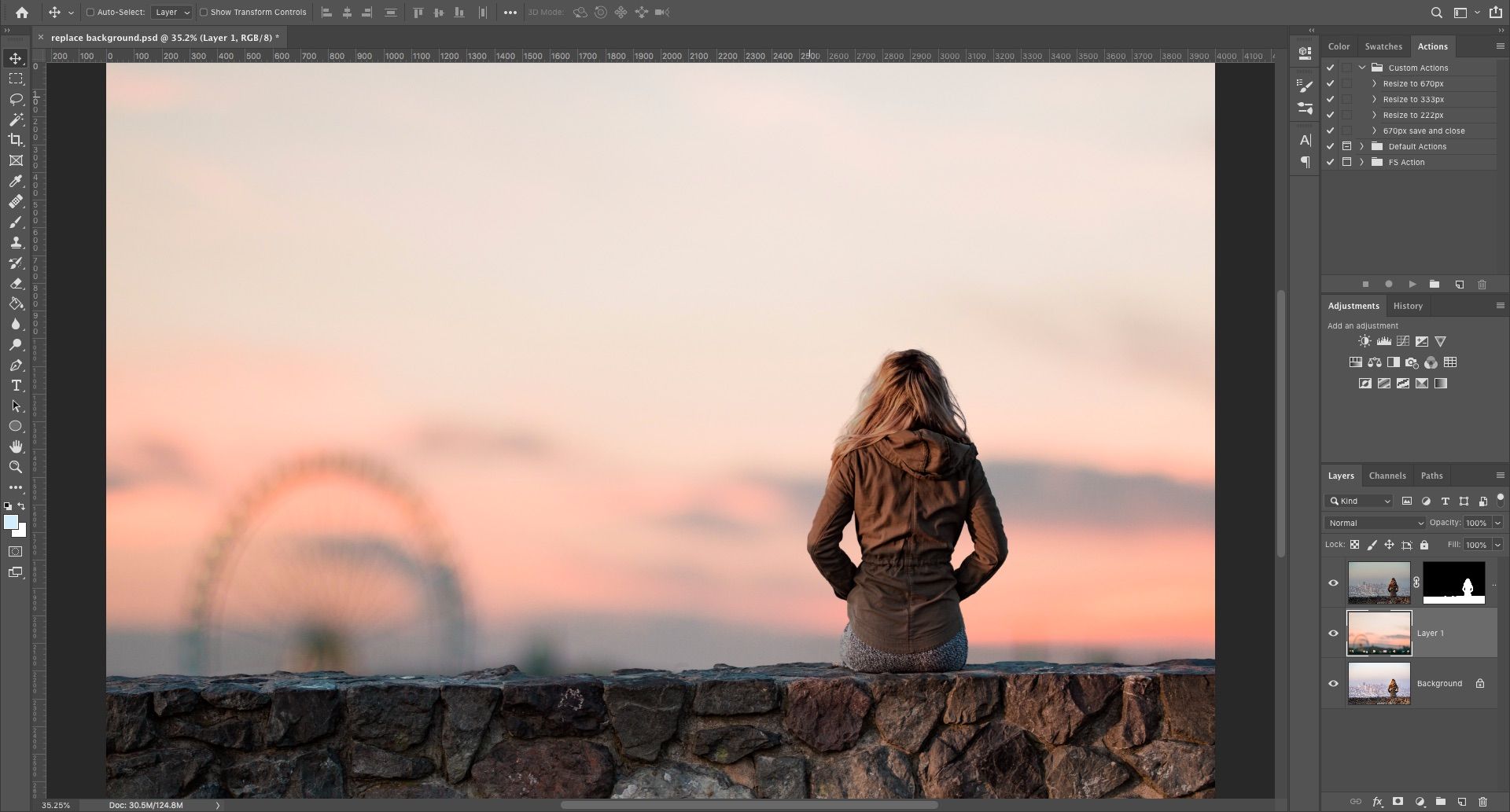
Use the Mitt tool to position the layer wherever yous want, resizing it if necessary using the Costless Transform tool (Ctrl +T or Cmd + T). Grab the handles on the corners or sides of the images and drag inward to arrive smaller. Hold the Shift cardinal to keep the aspect ratio the same.
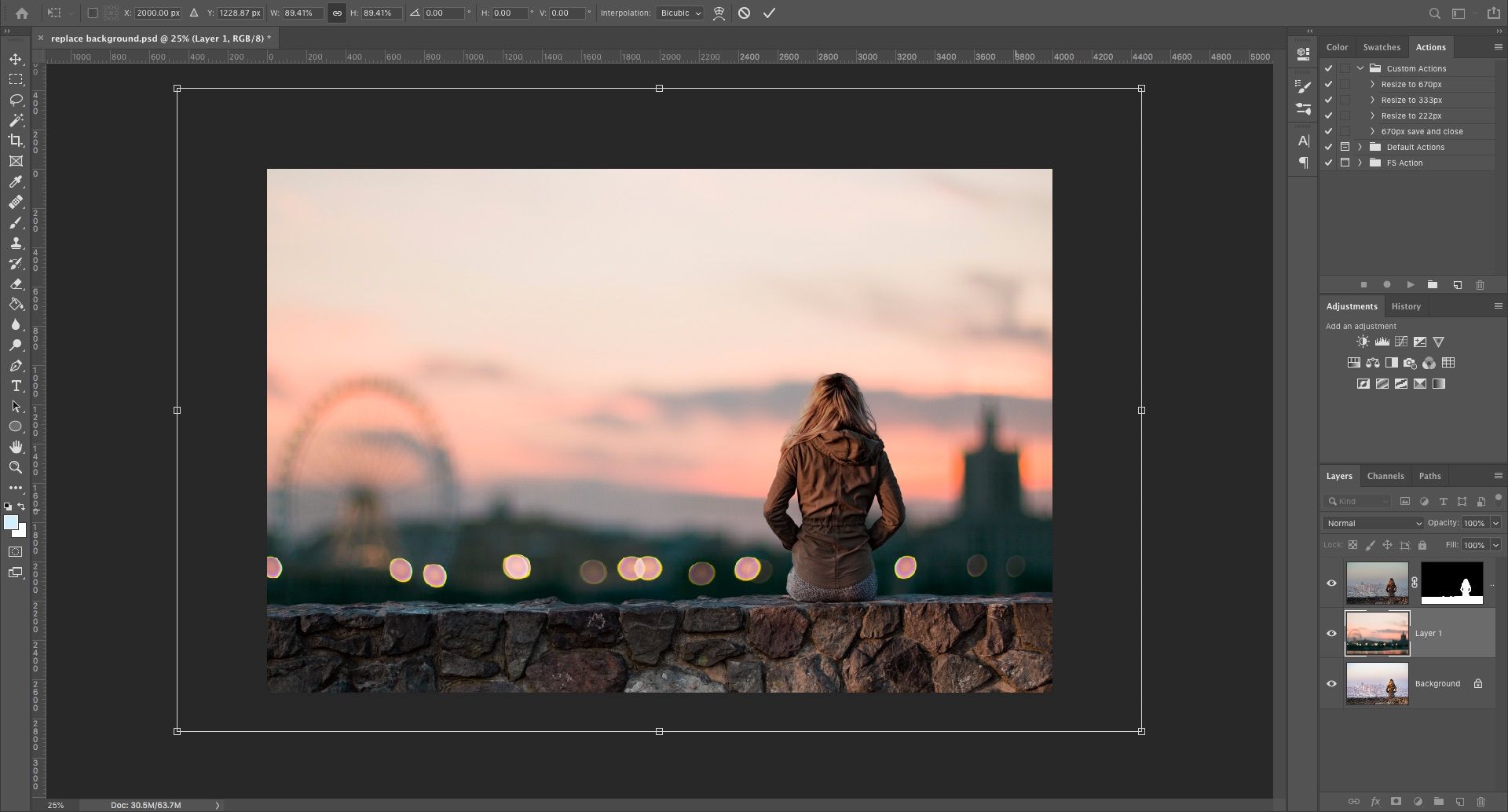
Step 8: Match the Colors
By at present it should be looking pretty proficient. The terminal stride is to fix the colors of the foreground to brand sure they blend properly with the background.
Select the foreground layer, making sure to select the image, non the mask. Go to Image > Adjustments > Lucifer Color.
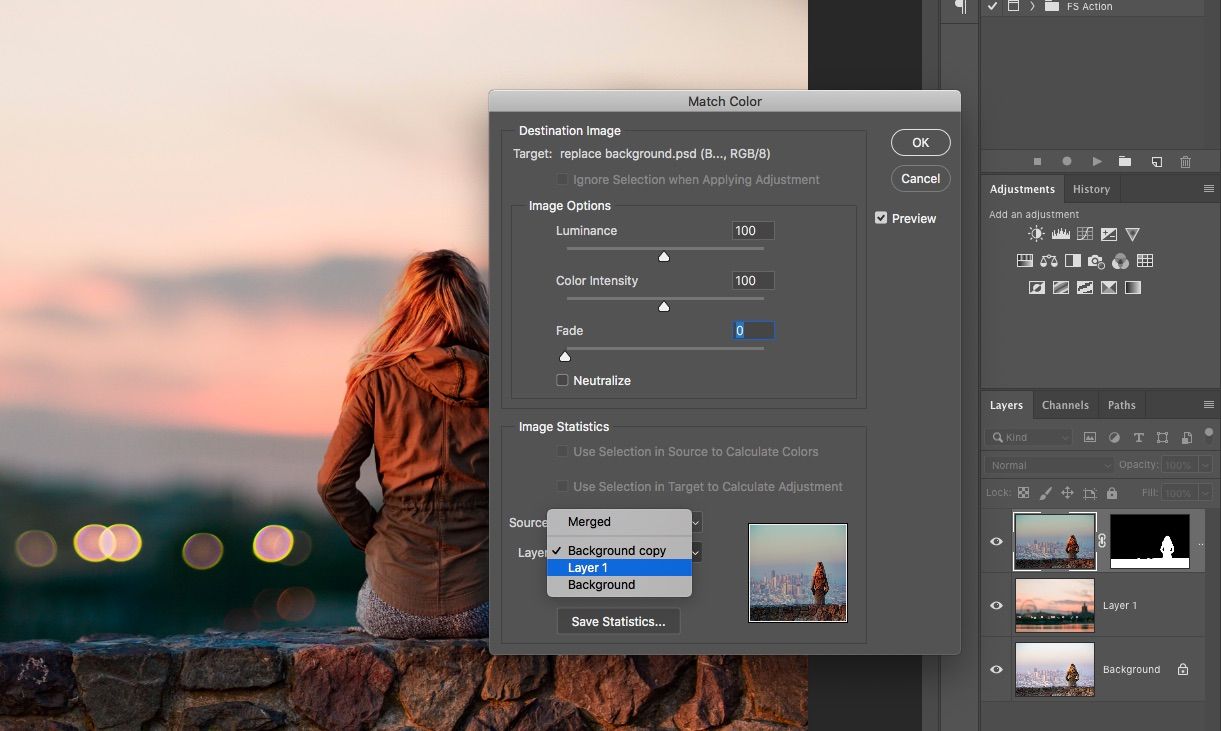
In the window that opens, become to Source and select the image you're working on. Under Layer select which layer y'all want to fix—you can either match the foreground to your new background, or vice versa.
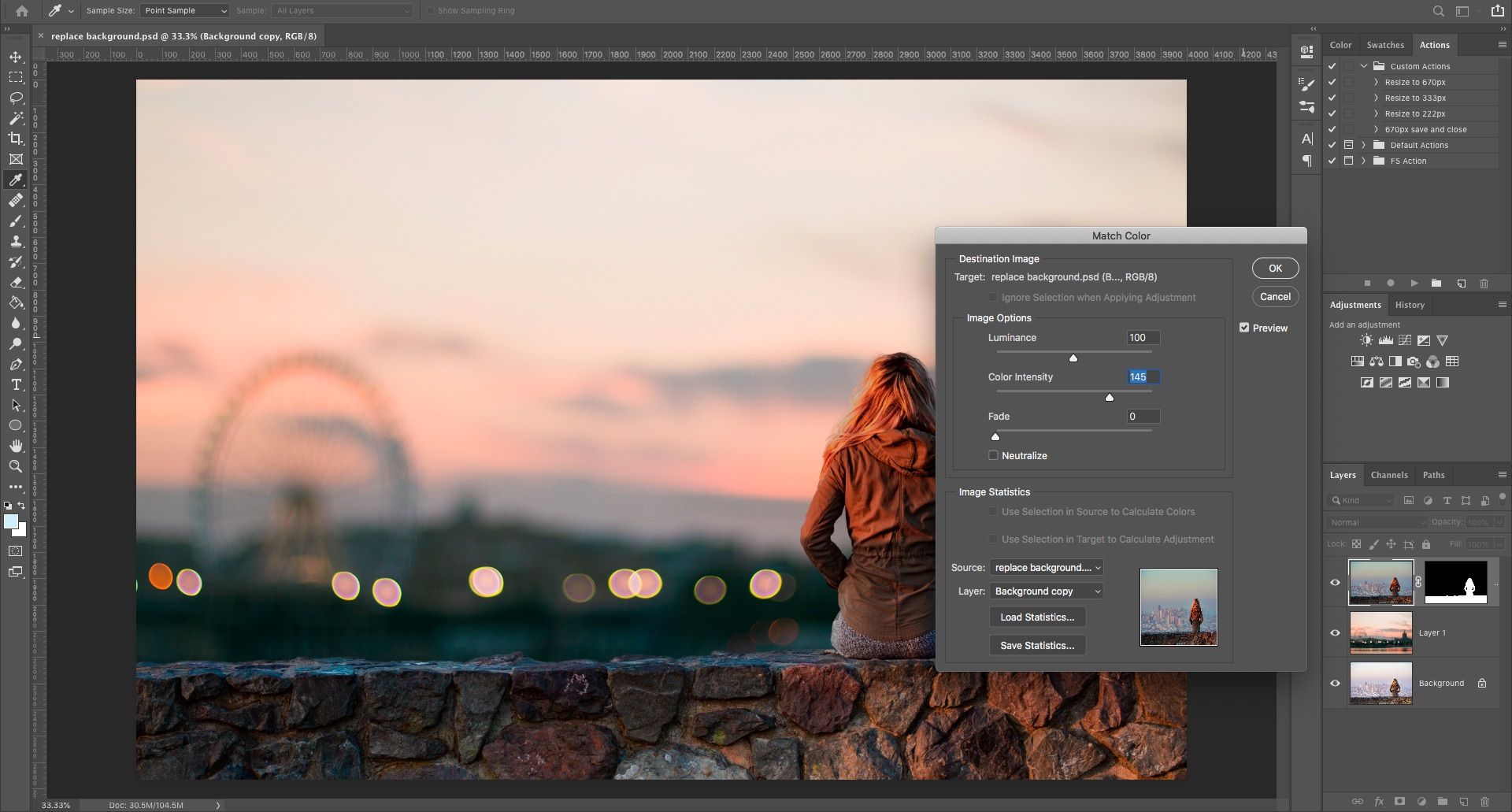
Now check the Neutralize box to remove any color casts from your chosen layer, and adjust the Luminance and Intensity options until your foreground and background lucifer. You can reduce the effect using the Fade slider if you need to. Utilize the Preview option to toggle between the before and later on states.
Step 9: You're Done!
Click OK and y'all're done. Save your file in the PSD format to preserve all the layer information. With the foreground, background, and original image all on divide layers, your file remains fully editable. For more means to meliorate your image editing, try these Adobe Photoshop workflow tips.
You lot can edit the mask to add or remove from what's visible in your foreground, and yous can reposition the background or fifty-fifty experiment with different ones entirely.
To share your prototype you'll need to relieve it in another format. Go to File > Save As and choose JPEG to do this. Don't delete your PSD, though—that's your fill-in!
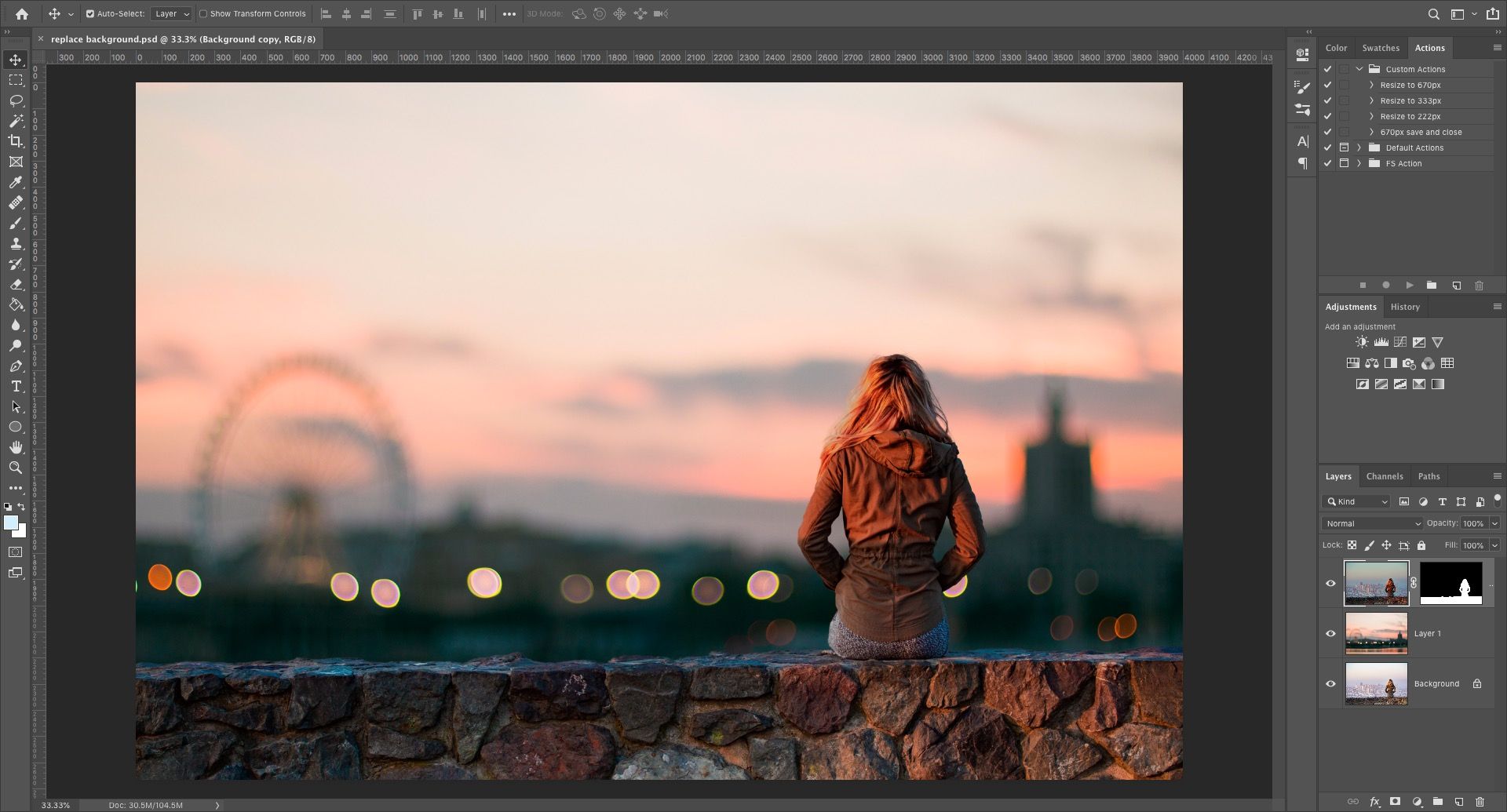
What If You lot Don't Have Photoshop?
When you want to change an image background in Photoshop, it's piece of cake. You can even speedily add someone to your images or remove blemishes from photos. Just you tin attain similar things in most other serious graphics packages, as well.
There are lots of gratuitous alternatives to Photoshop if y'all don't want to pay for it. We recommend GIMP as a skilful starting indicate, as it's available for Windows, Mac, and Linux. Merely that's just one of your options.
How To Change The Background Of A Headshot In Photoshop,
Source: https://www.makeuseof.com/tag/how-to-change-the-background-of-a-photo-in-photoshop/#:~:text=Select%20the%20foreground%20layer%2C%20making,new%20background%2C%20or%20vice%20versa.
Posted by: jonesofeautioull1984.blogspot.com



0 Response to "How To Change The Background Of A Headshot In Photoshop"
Post a Comment